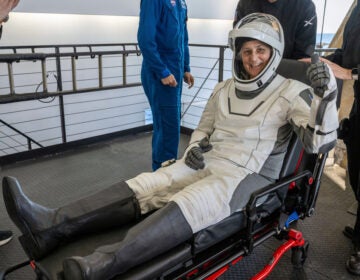Spring Ahead
It's time to set your clocks ahead!

Kimberly Paynter/WHYY
Daylight Saving Time begins at 2:00 a.m. on Sunday, March 8th when we shift clocks ahead by one hour. We make the change so that daytime more closely matches civil time and human activity timeframes. The earliest sunrise comes around June 15 at 5:31 a.m. If we didn’t shift time forward, that sunrise would come at 4:31 a.m.
But Daylight Saving Time is only useful for portions of the world at increasing distance from the equator. Sunrise and sunset times for the equatorial regions don’t change much seasonally, whereas the closer we get to the poles the greater the changes in sunrise and set times are.
We only just discovered it (Feb. 15) and astronomers predict it’ll be gone by April – our new ‘minimoon’ 2020CD3. Identified as just a few meters across, it’s a tiny chunk of space rock – maybe – captured by Earth’s gravitational filed and pulled into a brief ‘hook-up’ with Earth. This is only the second one like this ever discovered. The last one was seen in 2006 and it hung around for a year. There’s a chance it might also be a piece of space junk – that just goes to show how little we know about CD3.
There are other asteroid-like objects that co-orbit the sun along with the Earth. None are very big or threatening in any manner.
Nice morning planets at 6:30 am in the Southeast. Venus and Uranus are together tonight and tomorrow.
You can see one but not the other! Separated by about one billion miles.
WHYY is your source for fact-based, in-depth journalism and information. As a nonprofit organization, we rely on financial support from readers like you. Please give today.




